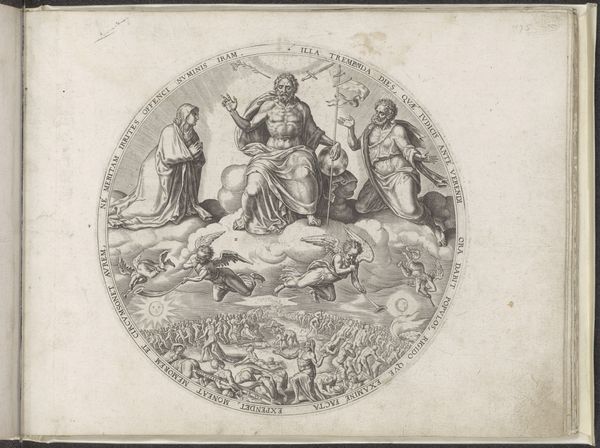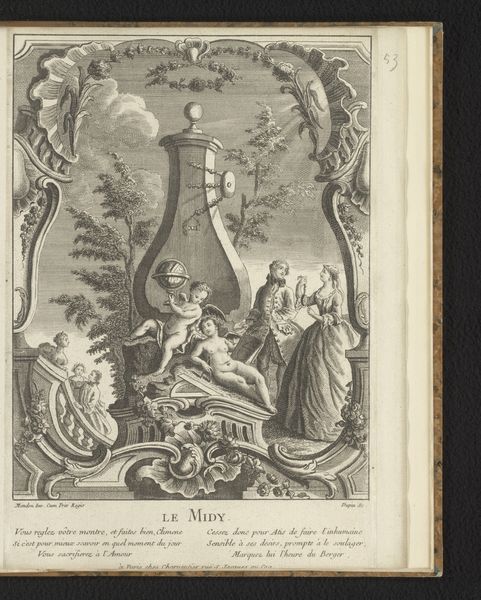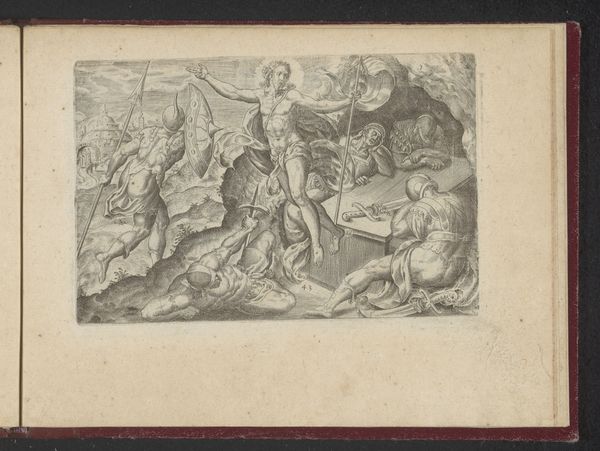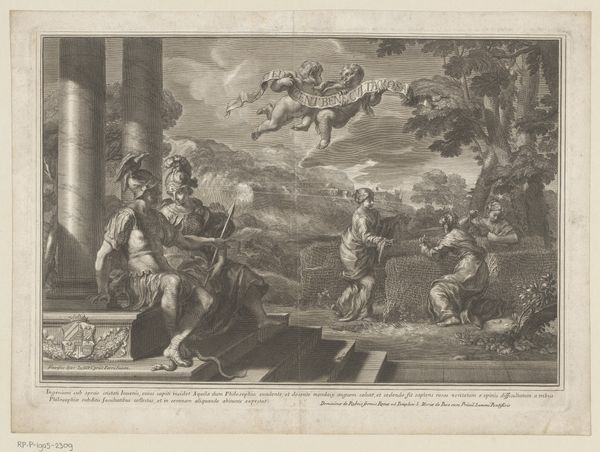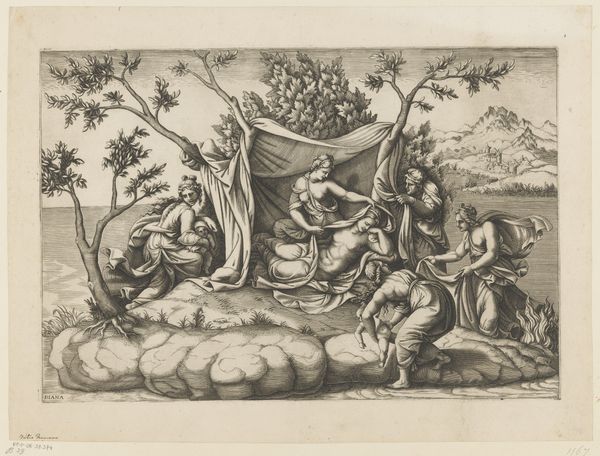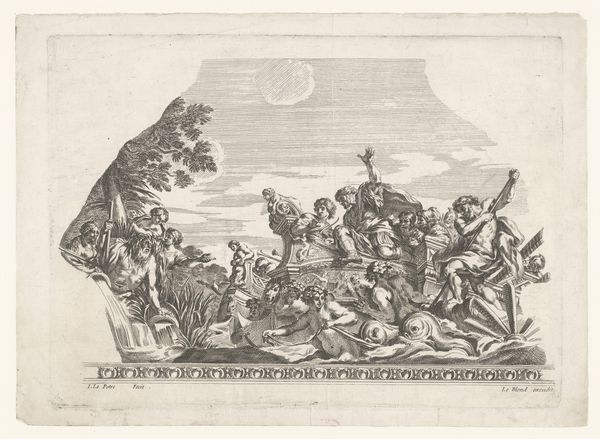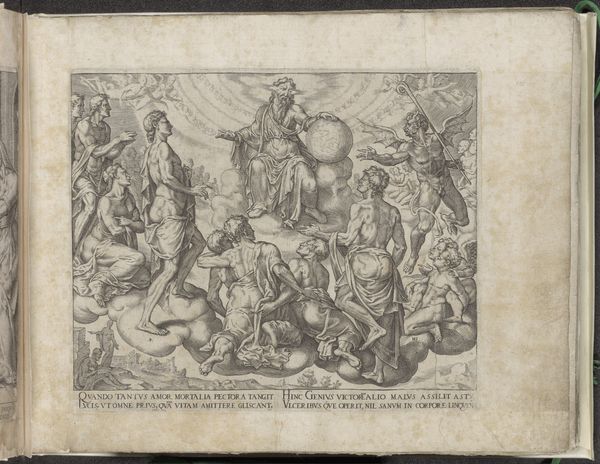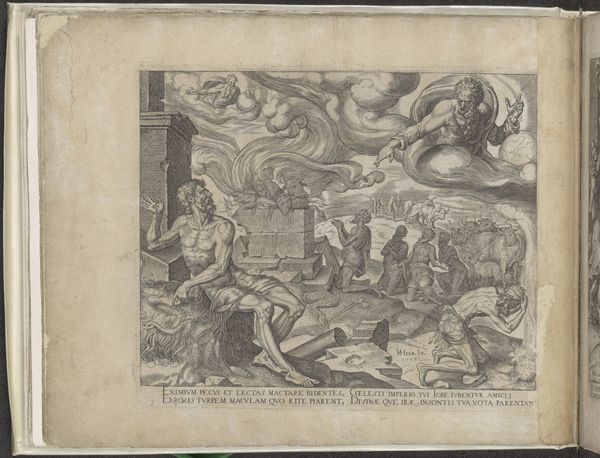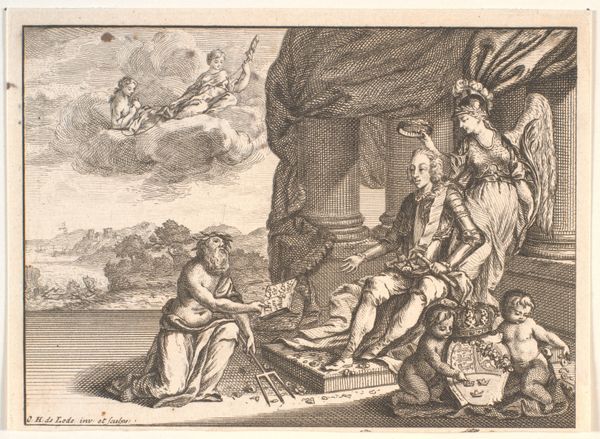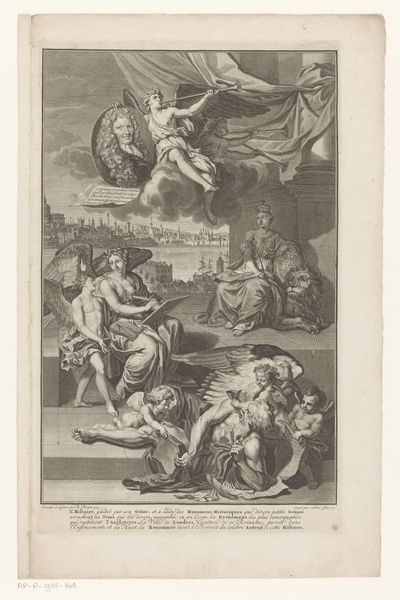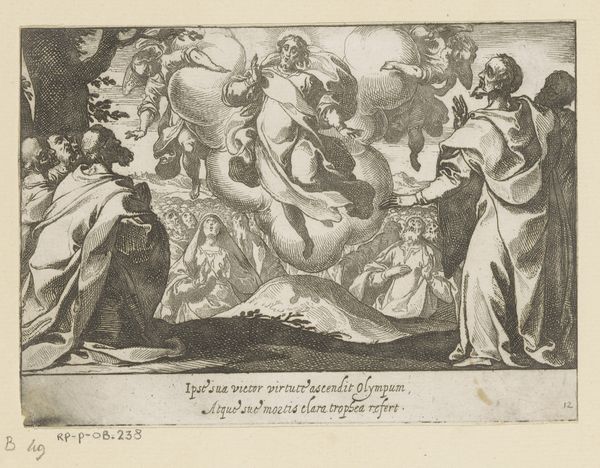
engraving
#
allegory
#
figuration
#
history-painting
#
northern-renaissance
#
engraving
Dimensions: height 204 mm, width 248 mm
Copyright: Rijks Museum: Open Domain
Curator: Here we have an engraving by Philips Galle, made sometime between 1563 and 1570. The piece is titled "God deelt verschillende taken uit aan de drie standen," or "God divides different tasks among the three estates." It’s currently held at the Rijksmuseum. Editor: Immediately, I’m struck by the almost theatrical composition. God enthroned on high, radiating light, and then below, these figures kneeling, reaching… It feels like a stage tableau of sorts, incredibly formal. Curator: Yes, very much a designed order to the world. Galle employs a very typical Northern Renaissance style, even using Latin text to clearly define the symbolic role of each group. You’ll notice that God is elevated above the three estates – the clergy, the nobility, and the peasantry or working class. Each is kneeling, as the Latin tells us, offering service in different forms. Editor: I find myself focusing on that division, though. It's less about the divine light, more about the implied social hierarchy. God bestowing tasks, sounds awfully close to burdens, if you're looking at it from the perspective of the laborer kneeling there. The tools of labor right next to him in the image really amplify this hierarchy. Curator: Precisely, that's a core element. Each social stratum is being given a divinely ordained role in the great chain of being. This visual narrative uses archetypes: The cleric is the embodiment of piety, the king the embodiment of power, and the labourer represents… well, labor. They all serve a function for the greater whole. The objects surrounding each, such as the tools next to the laborer, create immediate legibility for a 16th-century audience. Editor: Looking closer, the imagery is potent. God with his orb is literally seated over the division of power amongst all. It's interesting how Galle captures what could feel oppressive. Curator: It serves as both a mirror reflecting their social order and, in theory, a justification for its continued existence. Of course, these kinds of idealized portrayals also inadvertently illuminate the strains within such rigid systems. Galle gives us a perfect distillation of this era, but I can’t help imagining someone in 1570 contemplating if those ordained tasks were truly just. Editor: It's a conversation-starter, no doubt, pulling the viewer into centuries of cultural baggage through the potent, compact language of visual symbol.
Comments
No comments
Be the first to comment and join the conversation on the ultimate creative platform.
